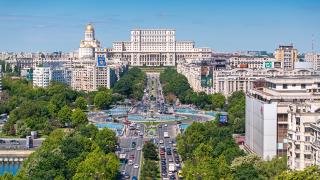There have been academics and analysts who have argued about the dangers of China’s economy overheating for some time. But for many, the fact that hedge funds, particularly those with track records on previous crises, are launching specific funds betting on the collapse of the economy is perhaps a sign that the bubble is close to bursting.
The Asian Development Bank records that fiscal and monetary stimulus, coupled with recovery in world trade, drove China to double-digit growth in the first half of 2010. As the stimulus phases out, GDP growth was seen to ease in the second half. Lower than expected inflation prompted a slight downward revision to the 2010 forecast.
Has China has reached a turning point? According to BNP Paribas, infrastructure investment will soon run out of steam, mainly due to the strong growth in 2009-10. Newly-started floor space growth went into negative territory in November 2010 and property inventory pressure may emerge in 2011. Many experts are in agreement that China’s economy may be entering a depressed cycle of stagflation, when credit-pumping leaks into speculation and prices spiral, even as growth slows.
The warning signs that the property market bubble could burst are clear to see. Real estate prices are a multiple of 22 times disposable income in Beijing and 18 times in Shenzhen. The US bubble peaked at 6.4 and has since dropped to 4.7.
“China is trying to keep the game going as if nothing has changed, but cannot continue to do so,” says Diana Choyleva of Lombard Street Research. “It dares not raise rates fast enough to let the air out of the bubble because this would expose the bad debts of the banking system. The Chinese growth machine is likely to continue to function in the minds of people long after it has no visible means of support. China’s potential growth rate could well halve to five per cent this decade.”
Yet, even if there are signs that Chinese economic growth is slowing, it is still predicted to grow in 2011. Core Pacific-Yamachi forecast that China’s GDP will expand by 8.8 per cent this year, only slightly slower than the 10 per cent recorded in 2010 due to the lower new yuan loan amount (CNY6.5-7trn, down from CNY8trn in 2010). GDP growth is indeed anticipated to step down by at least half a percentage point in 2011 from 2010, assuming the absence of stimulus programmes and subdued industrial-country growth. Looking further forward, rebalancing the sources of economic growth remains imperative.
